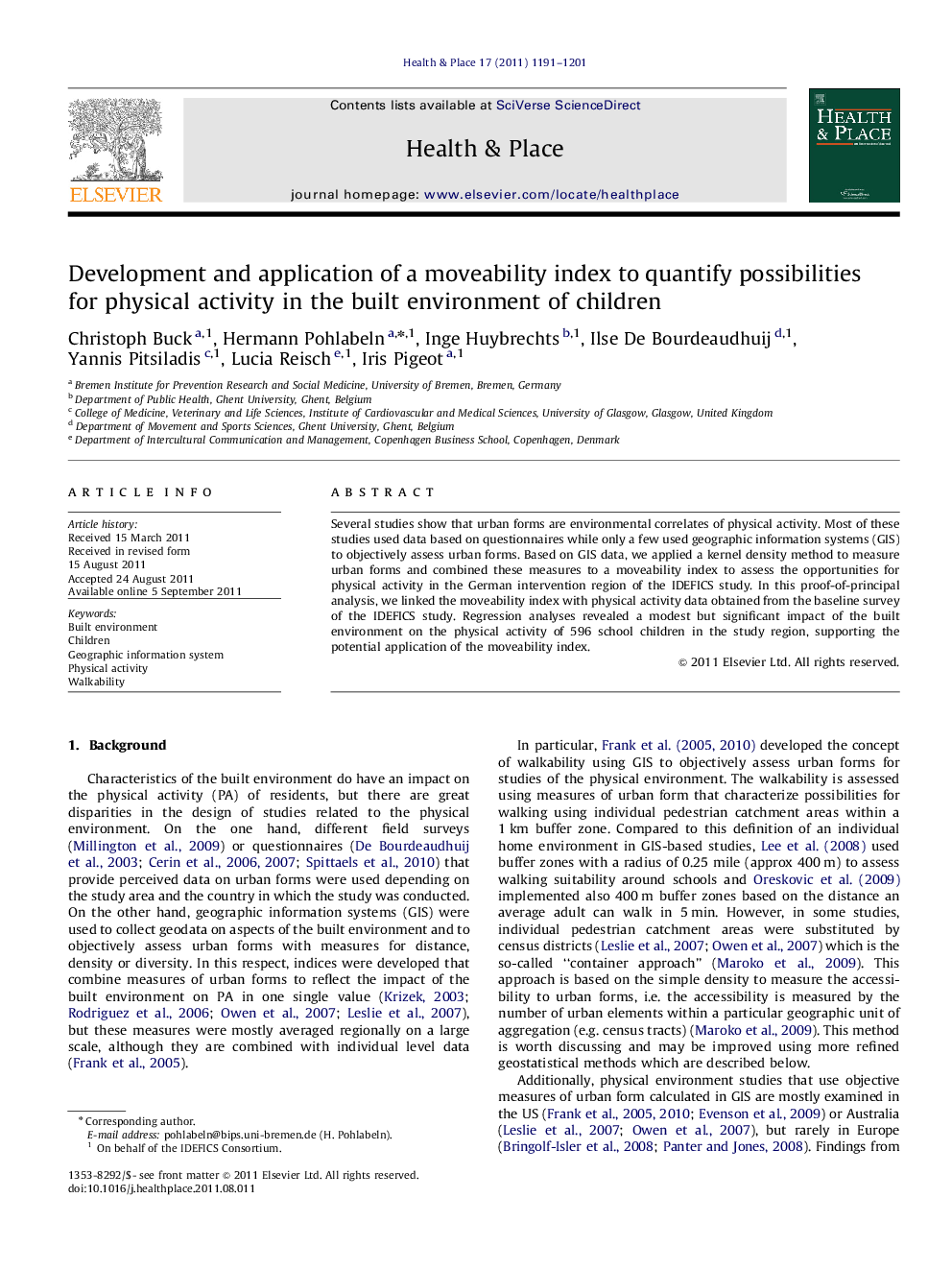| Article ID | Journal | Published Year | Pages | File Type |
|---|---|---|---|---|
| 1048623 | Health & Place | 2011 | 11 Pages |
Several studies show that urban forms are environmental correlates of physical activity. Most of these studies used data based on questionnaires while only a few used geographic information systems (GIS) to objectively assess urban forms. Based on GIS data, we applied a kernel density method to measure urban forms and combined these measures to a moveability index to assess the opportunities for physical activity in the German intervention region of the IDEFICS study. In this proof-of-principal analysis, we linked the moveability index with physical activity data obtained from the baseline survey of the IDEFICS study. Regression analyses revealed a modest but significant impact of the built environment on the physical activity of 596 school children in the study region, supporting the potential application of the moveability index.
► We analyze the impact of built environment on physical activity in German children. ► The kernel density method is used to assess urban forms. ► Measures of urban forms are combined to a moveability index. ► We find a positive association between the index and reported physical activity.
